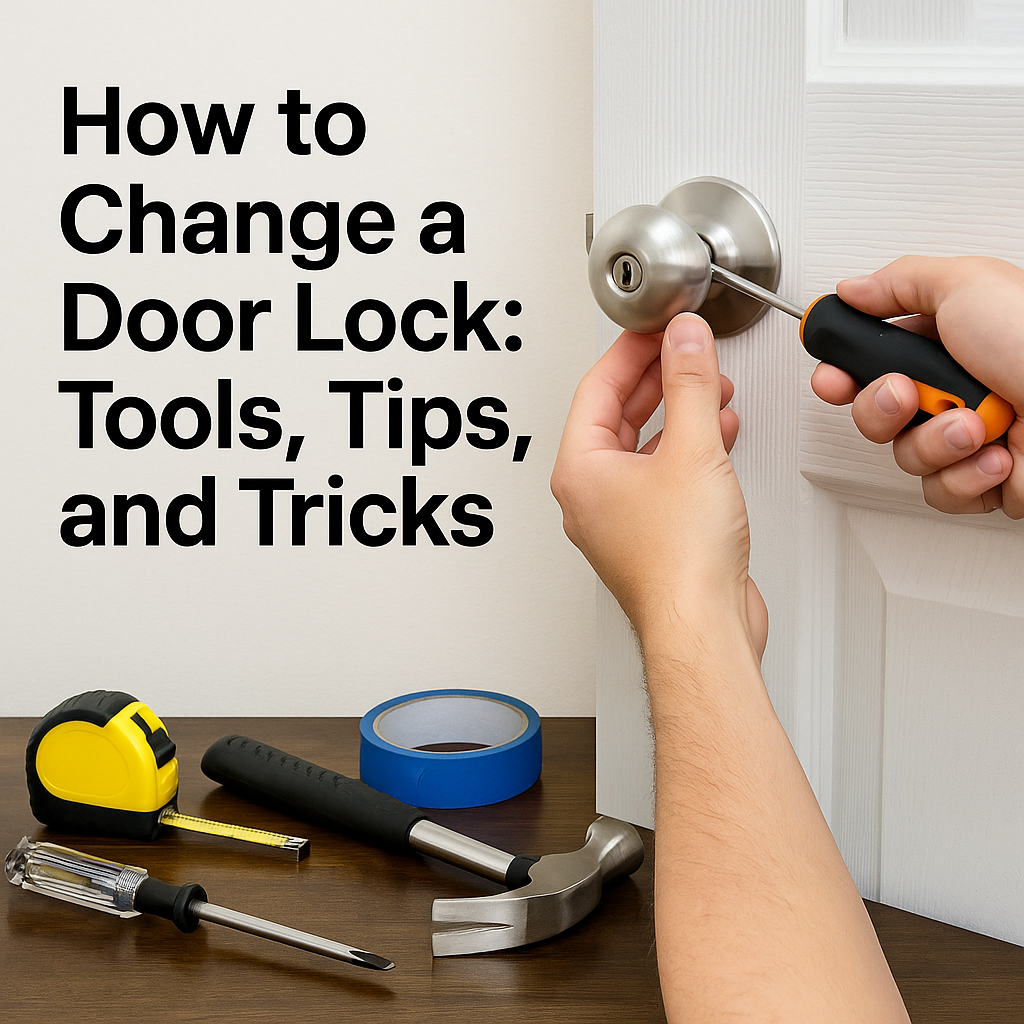
How to Change a Door Lock: Tools, Tips, and Tricks
Changing a door lock is one of the most useful DIY skills you can learn. It gives you control over home security, saves a locksmith call, and often takes less time than you think. This guide shows the exact tools and steps, plus pro tips most articles skip. Read straight through and you will get everything you need to replace a door lock.
Tools you really need for door lock replacement
You only need a few items for most jobs. A Phillips screwdriver and a flathead cover most screws. A drill is useful when holes need widening or a deeper strike plate hole is required. A tape measure helps check backset and borehole size. Keep painter’s tape to hold parts in place while you tighten screws. A small level or square makes alignment quick and accurate. Pack a handful of longer screws to reinforce the strike plate.
How to Change a Door Lock: Step-by-Step
Step 1: Remove the old lock
Start inside. Unscrew the interior plate, then pull both sides of the lock apart. Slide the latch out of the door edge. Keep all screws in a small container so nothing gets lost. If the lock is rusty, spray a little lubricant so screws come out without stripping.
Step 2: Inspect the hole and backset
Look at the borehole and the latch cavity. Measure the backset, the distance from the door edge to the center of the hole. Common sizes are 2-3/8 or 2-3/4 inches. If the hole is cracked or the wood is soft, use wood filler and let it dry before installing the new lock. This step avoids loose screws and future wobble.
Step 3: Fit the new latch and test alignment
Insert the new latch with the bevel facing the direction the door closes. Push the exterior and interior parts into place without tightening. Turn the key and handle to check movement. If the latch binds, small adjustments now save you time later.
Step 4: Secure the lock and tighten correctly
Tighten screws gradually, alternating sides so the lock sits square. Do not torque screws down on one side and skip the other. The spindle must sit evenly through the latch. If the lock feels stiff after tightening, back out the screws slightly and test again.
Step 5: Install or reinforce the strike plate and final testing
Attach the strike plate on the frame. Replace short screws with 3-inch screws that reach the stud behind the frame for real reinforcement. Close the door and test the lock many times, both with the door open and closed. Try the key, the thumb turn, and the handle. If the latch doesn’t catch, adjust the strike plate up, down, or deeper until the latch slides in smoothly.
Pro tips most people miss
Use longer screws on the strike plate to stop forced entry. If you want one key to open multiple locks, ask for keyed-alike sets when you buy new locks. When a key turns hard, try graphite powder in the keyway instead of oil. Oil attracts dust and dirt. If the door rubs on weather stripping after installing a new lock, shave a little off the stripping near the latch area. Small trims fix many alignment problems.
Rekeying versus full replacement
Rekeying changes which key fits the lock without replacing the hardware. It is a good choice if the lock is in good condition and you only need a new key control. Replace the whole lock when the mechanism is worn, corroded, or when you want higher security like a deadbolt or a smart lock. If the cylinder is pitted or sticky, replacement saves repeat problems.
Common problems and quick fixes
If the new lock is loose after a few weeks, the wood around the screw holes is likely soft. Remove the screw, squirt wood glue into the hole, and drive a toothpick or thin wooden dowel in. Trim the excess, then re-screw. If the key won’t turn, confirm the spindle is seated correctly. Small misalignment there stops the mechanism completely.
Final note and where to buy the right parts
Changing a lock gives confidence and real security. Take your time measuring before you buy. Get a lock with good reviews on durability and pick longer mounting screws for the strike plate. If you want reliable door locks, visit BTCS Hardware. We stock quality door hardware, ensuring both safety and design fit your home perfectly.